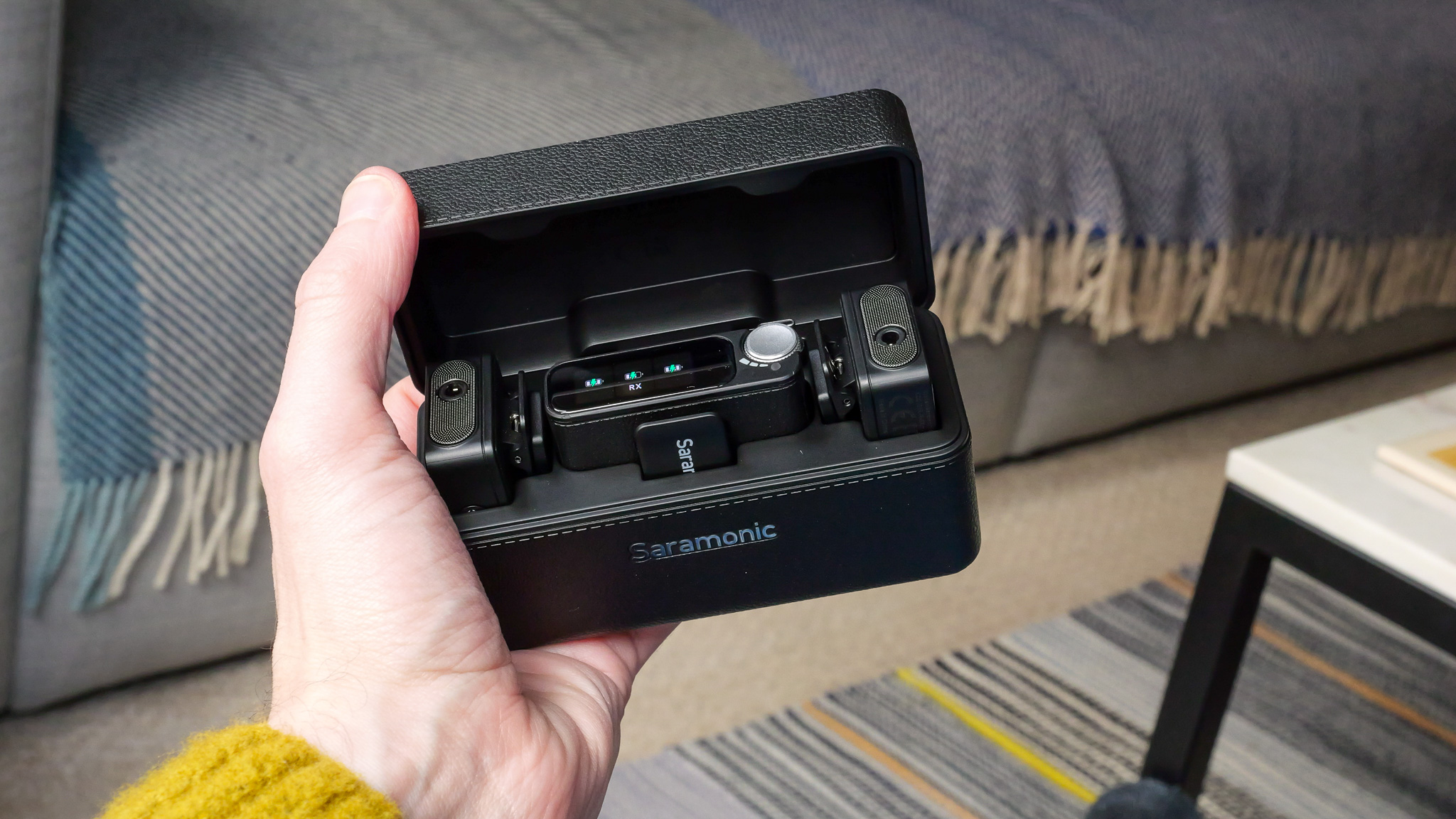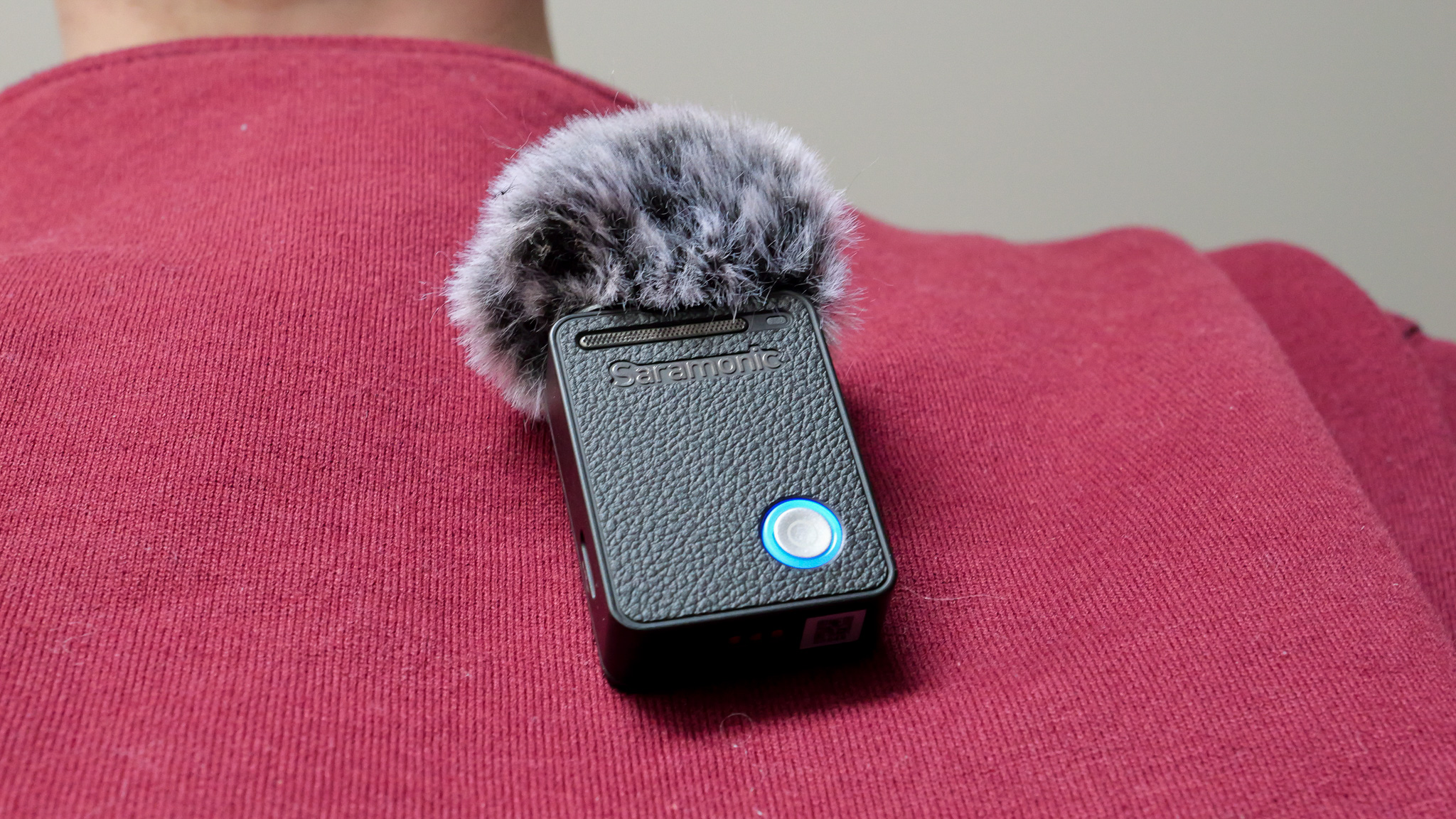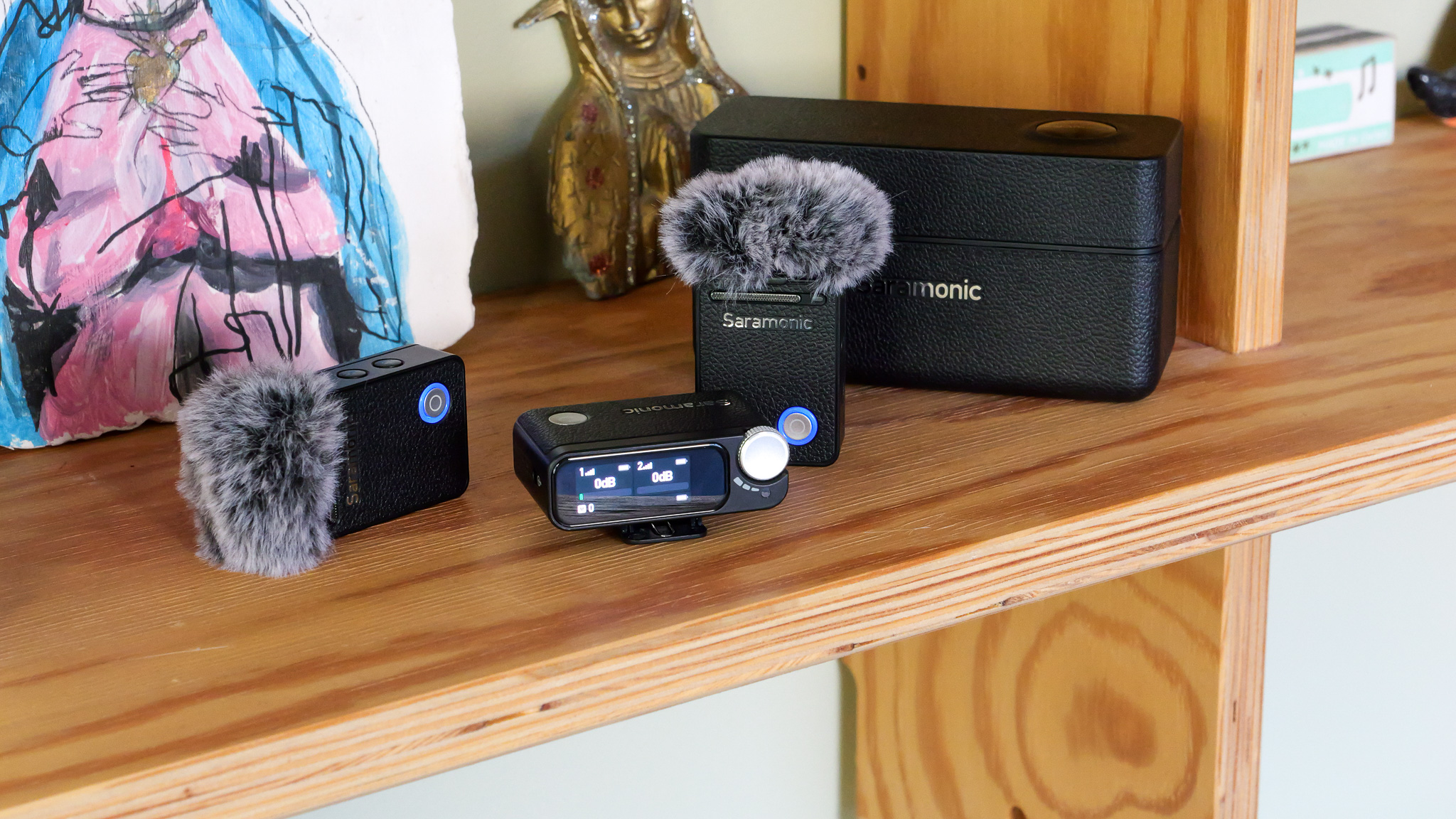Why you can trust TechRadar
We dedicate our time to thoroughly testing each product or service we review, ensuring you make the best purchase decision. Discover more about our testing process.
Saramonic Ultra: Quick Review
The Saramonic Ultra is a compact wireless microphone system similar to the well-known DJI Mic and Mic 2. Targeted at creators of audio and video content on the move—such as vloggers, podcasters, and reporters—the Ultra comes packaged with two wearable transmitters, a receiver, and a handy charging case to keep everything organized.
This setup allows for both single and dual-channel audio capabilities, with the receiver easily connecting to a range of devices for capturing high-fidelity 24-bit sound in recordings. Included adapters accommodate iPhones, iPads, USB-C smartphones, computers, 3.5mm camera inputs, and even Sony’s Multi Interface Shoe. Additionally, the transmitters can record audio independently thanks to 8GB of built-in storage. When recording directly to this memory, users can achieve 32-bit float audio quality, a format valued by audio professionals for its rich data and dynamic range.
While Saramonic’s construction may not feel as robust as some competitors, the transmitter’s IPX5 waterproof rating indicates a solid level of durability. Still, the noise-canceling features are not the most effective I’ve encountered, though the audio quality remains strong across different settings.

Saramonic Ultra: Pricing and Availability
- $249 / £259 / AU$449 for the 2-Channel Set, which includes receiver, two transmitters, and charging case
- Also offered with lavalier microphones included
- Currently available in black and white color options
The Saramonic Ultra can be purchased as a set that comes with two transmitters, one receiver, a charging case, Lightning, USB-C, and Sony Multi Interface adapters, a 3.5mm to 3.5mm cable, two windscreens, and a drawstring bag for storage. This bundle is available in both black and white finishes, priced at approximately $249 / £259 / AU$449. For a little extra, you can opt for the same package but with two lavalier mics included, at a cost of $299 / £289.
Currently, it seems there is no option to buy individual components, nor is there a standalone transmitter and receiver option (which exists with other brands like the DJI Mic 2 for cost-saving purposes).
However, considering its lower price compared to premium competitors such as the DJI Mic 2 and Rode Wireless Pro, as well as the relatively affordable Sennheiser Profile Wireless, the Saramonic Ultra claims to be one of the most cost-effective high-end wireless mic options available.

Saramonic Ultra: Specifications
| Dimensions | 45.5 x 33.5 x 15mm (transmitter); 117 x 48.5 x 62.4mm (charging case) |
| Weight | 35g (transmitter); 210.5g (charging case) |
| Transmission range | 300m (with antenna) / 250m |
| Connectivity | Receiver: USB-C, USB-C/Lightning output, 3.5mm input; Transmitter: USB-C, 3.5mm input |
| Battery | 6 hours, plus two extra charges from the case |
| Audio | 16, 24, and 32-bit |
| Noise cancelling | Yes |

(Image credit: Future | Sam Kieldsen)
Saramonic Ultra: Design
- Most components fit into the charging case for ease of transport
- The entire setup weighs 210.5g / 7.4oz
- Includes adapters for USB-C, Lightning, and Sony Multi Interface Shoe
Similar to other wireless microphone systems, the Saramonic Ultra features two key parts: a compact wearable transmitter and an equally small wearable receiver. The transmitter (two are provided) comes with a clip and a strong magnet, making it easy to attach to clothing, particularly suitable for thinner fabrics like t-shirts. It is equipped with a USB-C port for both charging and data transfer, as well as a 3.5mm jack to connect a wired lavalier microphone if preferred. Additionally, the transmitters hold an IPX5 certification, making them resistant to water—a feature not commonly found in competitor microphones.
The receiver connects wirelessly with either one or two transmitters and also includes a clip that serves as a mounting option for cameras. Furthermore, it comes with adapters for Lightning and USB-C devices. What distinguishes it from others is the optional antenna that can extend its wireless range to 300m (Saramonic claims a range of 250m without the antenna). The receiver displays an OLED touchscreen with a clickable dial for adjusting settings and monitoring gain levels. Although both features are compact, I found them easy to use; however, those with larger fingers may find them a bit tricky.

The charging case is designed to hold both transmitters, the receiver, as well as the Lightning and USB-C adapters. However, there isn’t space for additional accessories like the transmitter’s windshields or cables. Nonetheless, the case—with its leather-like finish and illuminated logo indicating battery life—is a stylish way to transport and recharge the essential components of the system. The build quality is slightly creaky compared to the DJI Mic 2’s case, but it’s sturdy enough for practical use.

Saramonic Ultra: Performance
- Offers recording in 16, 24, and 32-bit formats
- Transmitters can be utilized independently
- Features Noise Reduction, Vocal Boost, and Low Cut options
Much like the DJI Mic 2 and Rode Wireless Pro, the Saramonic Ultra allows for high-quality 32-bit float audio recording directly onto the 8GB built-in memory of the transmitters. 32-bit float audio can be compared to RAW photo files versus JPEGs—a much larger file size offering more data for post-production sound adjustments. Although I consider this feature helpful for professionals, I often prefer the smaller file size of 24-bit audio, which can also be streamed wirelessly.
The quality of 24-bit audio is impressive, providing clarity, and activating the Vocal Boost mode enhances the richness of speech. For anyone wanting their voice to sound deeper and more powerful, this mode will likely be used frequently. The system can also record in 16-bit audio as a space-saving alternative.
Additionally, there’s a Low Cut option that minimizes lower frequency noise, and the three-level noise cancelling feature does help to reduce background sounds—though not as effectively as the noise cancelling of the DJI Mic 2. For instance, I found traffic noise remained strong in my test recordings, even with the noise cancellation at its highest setting.

(Image credit: Future | Sam Kieldsen)
Wind noise tends to be an issue in outdoor recordings, even during calm conditions, so keeping the furry windshields on the transmitters when recording outside is highly recommended as they effectively mitigate such noise.
Users can set gain levels manually, with the receiver’s display offering real-time level indications and adjustment options. Alternatively, the Auto Gain setting can be beneficial in fluctuating environments, automatically adjusting gain to accommodate changes in background noise or the subject’s proximity to the microphone—ideal for non-studio situations.
There is no backup recording option to safeguard against signal drops, but attaching the antenna should ensure a strong wireless connection. While I wouldn’t count on the claimed 300m max range to hold perfectly (as I approach such specifications as optimistic), most users won’t test these limits. Personally, I encountered no signal issues while using the microphone in my home, even with obstacles like walls and floors.
A beneficial feature for professional users is the timecode support, aiding multi-camera filming by allowing easy synchronization of microphones and cameras during editing. This is a rarity, but both this model and the Rode Wireless Pro provide this valuable feature among recent wireless microphone releases.
Battery life is satisfactory, offering around 6 hours of use for each transmitter and the receiver, plus an extra 12 hours (or two full charges) in the case. Therefore, you can theoretically record for about 18 hours before needing to recharge.
Should I purchase the Saramonic Ultra?
Buy it if…
Don’t buy it if…
Saramonic Ultra: alternative options

My Testing of the Saramonic Ultra
- Utilized regularly for a week in varying quiet and noisy settings
- Connected with iPhone 13 and Panasonic Lumix GH6
I assessed the Saramonic Ultra mic both indoors and outdoors, connecting its receiver to my Apple iPhone 13 smartphone and Panasonic Lumix GH6 camera, as well as using it in standalone mode. I ensured diverse recording conditions to evaluate how the microphone performed with different background noises and environmental factors.

